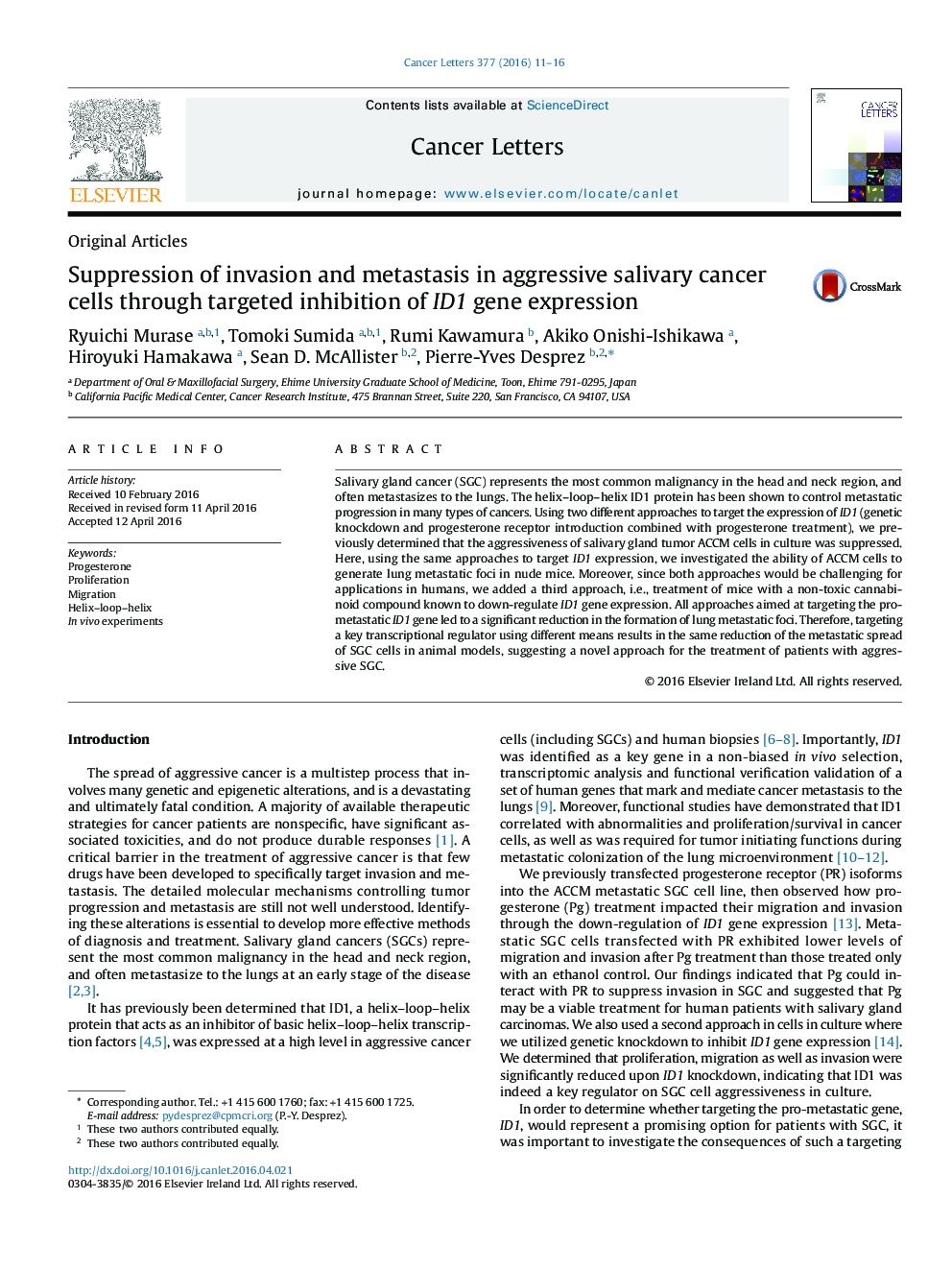| Article ID | Journal | Published Year | Pages | File Type |
|---|---|---|---|---|
| 2112315 | Cancer Letters | 2016 | 6 Pages |
•Expression level of the HLH ID1 protein is significantly increased during cancer progression, including SGC.•Targeting ID1 using genetic methods results in a significant reduction in SGC cell aggressiveness and formation of lung metastatic foci.•Tumor-bearing mice were treated with a non-toxic and non-psychoactive cannabinoid compound to down-regulate ID1 expression.•We suggest a novel approach for treating patients with aggressive SGC that expresses high levels of ID1 gene expression.
Salivary gland cancer (SGC) represents the most common malignancy in the head and neck region, and often metastasizes to the lungs. The helix–loop–helix ID1 protein has been shown to control metastatic progression in many types of cancers. Using two different approaches to target the expression of ID1 (genetic knockdown and progesterone receptor introduction combined with progesterone treatment), we previously determined that the aggressiveness of salivary gland tumor ACCM cells in culture was suppressed. Here, using the same approaches to target ID1 expression, we investigated the ability of ACCM cells to generate lung metastatic foci in nude mice. Moreover, since both approaches would be challenging for applications in humans, we added a third approach, i.e., treatment of mice with a non-toxic cannabinoid compound known to down-regulate ID1 gene expression. All approaches aimed at targeting the pro-metastatic ID1 gene led to a significant reduction in the formation of lung metastatic foci. Therefore, targeting a key transcriptional regulator using different means results in the same reduction of the metastatic spread of SGC cells in animal models, suggesting a novel approach for the treatment of patients with aggressive SGC.
